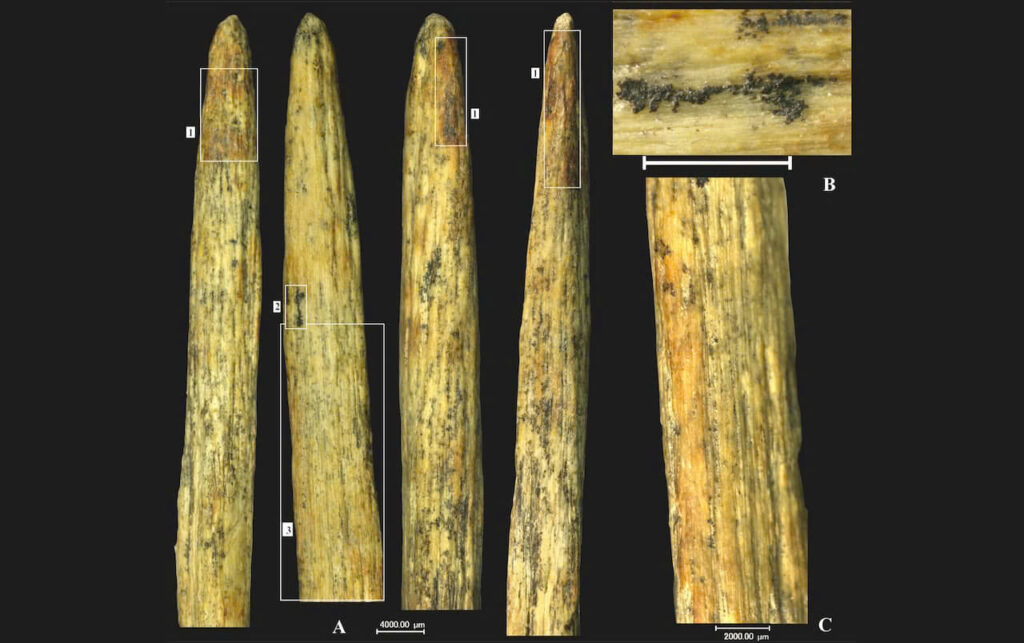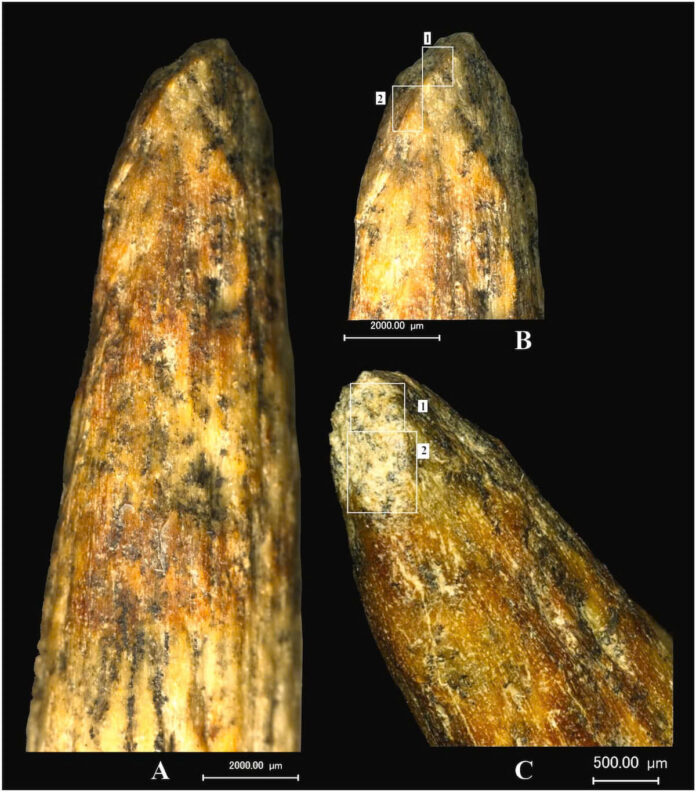Scientists have uncovered groundbreaking evidence that Neanderthals were developing sophisticated hunting weapons thousands of years before modern humans arrived in Europe. The remarkable discovery challenges long-held assumptions about Neanderthal technological capabilities and cognitive development.
80,000-Year-Old Spear Tip Rewrites History of Hunting Technology
An international research team has identified what is now Europe’s oldest bone spear tip, dating back between 80,000 and 70,000 years, in Russia’s Mezmaiskaya cave in the North Caucasus region. The 9-centimeter artifact, crafted from what appears to be bison bone, demonstrates remarkable craftsmanship for its era.

Using cutting-edge analytical techniques including advanced microscopy, computed tomography, and spectroscopy, researchers confirmed the spear tip was deliberately shaped using stone tools to create its sharp point. Perhaps most impressively, the artifact shows evidence of a natural tar adhesive at its base, indicating it was originally attached to a wooden shaft to create a complete hunting weapon.
How Archaeologists Confirmed Its Purpose

Several key features identified by researchers confirm the artifact’s function as a hunting implement:
- Strategic scraping and cutting marks consistent with intentional shaping
- Traces of natural adhesive at the base for shaft attachment
- Microscopic fracture patterns typical of high-impact use
- Limited wear patterns suggesting it broke during early use, possibly during a hunt
The spear tip appears to be an early version of similar technology later developed by modern humans, though somewhat more rudimentary in its design. According to archaeologists, this represents Neanderthals’ initial experimentation with this hunting technology.
Video
Discovery Context Provides Crucial Timeline Evidence
The artifact was initially unearthed in 2003 within a cave layer containing additional evidence of Neanderthal life—animal bones from hunted prey (primarily bison, goats, and deer), stone tools, and remnants of fire use. Researchers believe this area functioned as a workspace where Neanderthals processed their kills and manufactured tools.
Dating of the site, further validated by genetic analysis of Neanderthal remains found in the same layer, conclusively establishes that the spear tip predates modern humans’ arrival in Europe by approximately 25,000 years. This timeline definitively rules out the possibility that Neanderthals were simply imitating technology from modern humans.
Why This Finding Transforms Our Understanding of Neanderthals
Until this discovery, scientific consensus held that Neanderthals primarily relied on stone tools, with bone weaponry being an innovation exclusive to modern humans. This finding fundamentally shifts that narrative, demonstrating that Neanderthals independently developed sophisticated organic material technologies.

The discovery provides compelling evidence that Neanderthals possessed advanced cognitive abilities, including planning, creativity, and technical innovation—capacities previously underestimated by many researchers.
The research team, whose findings appear in the Journal of Archaeological Science, notes that the relative scarcity of similar artifacts may be explained by the poor preservation qualities of bone compared to stone tools. Each rare discovery like this provides invaluable insight into Neanderthal capabilities and culture, gradually completing our picture of these sophisticated early humans and their technological achievements.

